On January 22, 1946, George Danek, Robert Doublestein, and Edwin James appeared in separate proceedings before Judge Blaine Hatch in the Calhoun County Circuit Court in Battle Creek, Michigan.
All three men, recently discharged from active duty with the United States military, were in court that January day for divorce proceedings. Edwin James was seeking a dissolution of his marriage because his wife spent too much money on clothing. His mother testified to the couple’s constant quarrels, and Edwin, who had served on a submarine in the Pacific, told the court that fighting the Japanese 'wasn’t as bad as the battles at home.' Mrs. James announced to the court that she would not live with her husband or any man ever again.
Betty Jean, the wife of Robert Doublestein, recounted to Judge Hatch that her husband, a former army cook, returned from the war with an exceptionally critical attitude toward her cooking. She described an incident where he embarrassed her by harshly criticizing the food during a dinner party they hosted for his company commander. Particularly hurtful was Robert’s scathing critique of Betty Jean’s meat, potatoes, and pudding. In addition to these offenses, she testified that Robert had struck her on one occasion.
George Danek, who had served with the army and had only returned home on December 15, 1945, had no idea why he was in court. His wife had initiated the divorce, and he was completely blindsided.
These three cases paint a picture of the fragmented domestic landscape in the immediate aftermath of the Second World War. A 1946 article in the New York Times, titled The Why’s of War Divorces, revealed some staggering statistics.
“More than half of America's 1,500,000 war-wed GI's have returned. Already one out of every four of these 800,000 men is entangled in divorce proceedings. Experts are predicting that by 1950 1,000,000 of these wartime marriages--or two out of three--will end in divorce.”
In the divorce capital of America, Reno, Nevada, the courts set an all-time record in 1945 with eight thousand divorce decrees issued. Reporter Inez Robb noted that the number would have been higher if there had been additional housing to accommodate all the men and women who were waiting in line for their day in court.
The post-war divorce rate emerged as a significant social concern, sparking debates in newspapers and becoming the focus of extensive articles and speeches. The Why’s of War Divorces named six primary reasons for the failure of wartime marriages: hasty unions, separation, disillusionment, mésalliances (marriage to a person deemed unsuitable or of lower social standing), fraternization (marriage to a person from a different country), and economic hardships.
This is the flip side of the hero’s return to post-war domestic bliss, economic security, and the baby-making boom. While thousands of men did return to follow through with weddings postponed because of deployment, and in some cases, weddings long delayed due to the economic hardships of the Great Depression, the darker side was that in the first few years after the war’s end, 1 in 6 marriages collapsed.
In the midst of this social milieu, Warner Bros. released the crime drama The Unfaithful (1947), a loose remake of the 1940 box office hit The Letter starring Bette Davis and Herbert Marshall. Directed by Vincent Sherman, The Unfaithful stars Ann Sheridan, Zachary Scott, Lew Ayres, and Eve Arden. Sheridan plays the very happily married Chris Hunter, in fact, her relationship with her husband, Bob (Scott) is so seemingly perfect, that it is the envy of their social circle. In contrast to Chris and Bob’s picture perfect marriage, Bob’s cousin, Paula (Arden) has just finalized her divorce.
To celebrate the end of her marriage, Paula throws a party. Chris is there, and so is Paula’s lawyer, Larry Hanneford (Ayres), a society divorce attorney who serves as a mature voice of reason throughout the film. His busy office provides a running commentary on the state of modern American love and relationships.
Later that evening, Chris returns home, she is attacked outside her front door, a struggle ensues, and she stabs the man to death in her living room. When the police arrive, she insists she has never seen the dead man before and that the murder was self-defense. Later, it is revealed that Chris and the dead man had a wartime affair while Bob was off fighting in the South Pacific.
The Unfaithful (1947) opens with a voice-over narration stating, “our story takes place in Southern California the problem with which it deals does not belong to any one city, town, or country, but is of our times.” The specific problem the film confronts is divorce and wartime infidelity. The film vividly portrays the genuine challenges surrounding the disintegration of post-war domestic relationships. Many couples, as men returned home from war, discovered that after years apart, a return to domestic 'normalcy' was not as straightforward as they had anticipated.
The Unfaithful falls into the category of domestic noir. In these films, noir elements such as dark and shadowy cinematography, morally ambiguous characters, and a pervasive sense of cynicism and disillusionment—are applied to stories set within the context of domestic life or relationships. Unlike traditional film noir, which often unfolds in urban landscapes or criminal underworlds, domestic film noir brings the noir sensibility into the intimate and often mundane spaces of everyday life. These films typically explore the darker aspects of domesticity, portraying tensions, secrets, and conflicts within households or interpersonal relationships. (see also Mildred Pierce, Leave to Heaven and Caught)
In The Unfaithful, the viewer is treated to the traditional noir visual elements, a twisty crime story that goes beyond murder and infidelity, and also includes blackmail and a sensational murder trial. However, there is also a serious examination of the legal and moral consequences tied to the specific contemporary domestic issues of infidelity and divorce.
Later in the film, it is revealed to the audience that Chris and Bob had known each other for only two weeks before marrying, just before Bob left to go overseas. As Chris explains:
“We knew each other two weeks, and then you were gone. . .you were a thousand miles away and I was alone. During the day there things to do, but at night, I sat alone, I ate alone, I went to the movies alone, I took walks alone. You wouldn’t understand, no man would, but ask any woman who sat and waited desperate to hang on to something real when there seemed to be nothing.”
A sentiment that undoubtedly resonated with many women in the audience. Chris makes it clear that her need to alleviate loneliness and her desire for affection never meant that she stopped loving Bob. Chris’ predicament is explored with greater nuance and sympathy than other immediate post-war films that featured unfaithful GI wives and girlfriends. Two examples that immediately come to mind are the 1946 films, Nobody Lives Forever and The Blue Dahlia.
Nobody Lives Forever, begins with John Garfield’s character, Nick Blake, being discharged from a military hospital. His post war plan is to use the $50,000 he stashed away from pre-war criminal activities to marry his girlfriend, Toni (Faye Emerson), and take a break from his former life of crime.
Unfortunately, Nick finds Toni singing in a nightclub and discovers that she has lost all of his money. Moreover, she has hooked up with the nightclub owner. Within a few hours of his release from the hospital, all of Nick’s plans have evaporated. He tells Toni, “All the time I was in the Army, I didn't have much else on my mind but you. All the way back home on that hospital ship, I kept seeing your face waiting for me.”
Toni’s betrayal leads Nick to abandon New York City and his plans to go straight.
In The Blue Dahlia, Alan Ladd’s Johnny Morrison's surprise return home from the Navy is not marked by a tearful and joyful reunion, à la Frederic March and Myrna Loy’s in The Best Years of Our Lives, but by Johnny’s interruption of a drunken cocktail party in wife Helen’s apartment.
Helen (Doris Dowling) is more annoyed by Johnny’s return than anything else. She even refuses to linger in his embrace, pushing him away after a quick, chaste hug and kiss. While he was away, their son died, and Helen moved into an upscale apartment. She spent the war years drinking and partying, like Toni, she’s got a boyfriend—a shady nightclub owner. Helen’s party guests greet Johnny’s arrival with wide eyes and disbelief; they didn’t even know she had a husband.
Johnny’s homecoming is disheartening to watch. He sees that Helen is an unrepentant party girl with no desire to pick up and return to their old life. He also discovers the heartbreaking truth of his son’s death. But, very soon after, Helen is murdered and Johnny becomes the prime suspect.
Nick and Johnny each return to discover their partners dressed to the nines, sipping on cocktails, and in the company of their boyfriends. It's noteworthy that both of these women chose to cheat with nightclub owners—men who did not go to war or even engage in war work further emphasizing their disloyalty. Unlike Chris in The Unfaithful, Helen and Toni come across as extremely unlikable and one-dimensional characters. Although neither one is the central focus of the story, their betrayals serve as the catalysts that set the plot in motion.
It is important to note that while contemporary sociologists and family experts attribute the era's high divorce rate equally to men and women, popular culture often skewed towards portraying women as the unfaithful wartime partners and the disruptors of domestic life. This is particularly evident in film noir (see also High Wall, Undertow). Such portrayals reflect the very real post-war angst and response to the building tension over women in the workplace, as well as the reluctance of many women to return full-time to the domestic sphere.
World War II mobilization opened the door for women to find employment in jobs previously closed to them due to their sex. It’s estimated that up to six million women joined the civilian workforce during World War II, in jobs as diverse as streetcar operators, taxi drivers, construction workers, steelworkers, lumber workers, and munitions workers. These new opportunities and broader freedom of choice in the workplace made a woman’s work outside the home a challenging genie to put back into the bottle.
Although women’s participation in the workforce was essential to the war effort, after the war, many considered the freedom women experienced as the root cause of their infidelity and promiscuity. Of course, by design, all of this ignores the fact that, like women, men cheated during wartime, and they also cheated when they returned home.
“(During the war) there was a lot of sex. For some men it was a simple bedding of as many girls as time, liquor, lies and money would afford. For others it was romance, with vows and heavy sentiment. . .They were the most desirable men that foreign girls could hope to find, and they acted the part. These foreign women must be forgiven their surrenders. Swaggering hundreds of thousands of men, confident, well-fed, comparatively rich, and avid love makers swept through their towns. The Americans believed in direct, brutal sex, combined with the sort of romance invented by the movies; women responded. . .The war ended. Combat men began to go home, unaware of the deeper currents that lay beneath their dalliances in Europe. - Our Changing Sexual Code, Coronet Magazine August, 1955
Some of these men fathered children with women overseas, some ditched their fiancées or girlfriends for foreign war brides, and some husbands, once they returned, showed little to no interest in home life. However, predictably, it was only unfaithful GI wives whom the popular opera singer Grace Moore suggested should have their heads shaved.
Popular culture often portrayed the unfaithful GI wife in the mold of Doris Dowling’s Helen in The Blue Dahlia. Therefore, it is significant that, unlike The Blue Dahlia and Nobody Lives Forever, The Unfaithful centers its story around the wife left behind. The film ultimately explores the complexities of guilt, forgiveness, and societal expectations in the context of post-war relationships. It stands as an outlier by delving into the tragic aftermath of wartime infidelity, allowing Chris to articulate her experiences and emotions. This gives voice to the loneliness and desperation many women felt during their husbands' absence.
As the story comes to its conclusion, Chris is acquitted of murder, and she and Bob turn their focus to the state of their marriage. With guidance from attorney Larry Hanneford and a reality check from Paula, who reminds Bob that he bears some responsibility:
Paula: Two and a half years is a long time. . .listen you knew you were going when you met her,:that’s why you married her.
Bob: I married her because I loved her.
Paula: Sure, for two weeks. How long was that supposed to last her? What you wanted was a whirl and a memory. A beautiful woman waiting for you. You didn’t want anyone making time with her while you were away, so you hung up a No Trespassing sign, like you’d stake a gold claim.
The couple works to come to terms with all the damage done to their relationship stemming not only from Chris’ affair but also from the couple's lack of familiarity with each other, the stresses of wartime separation, and the differing and gendered expectations of each spouse during their years apart.
Their conversations evolve from accusations and finger-pointing to a series of discussions about personal responsibility, shared consequences, and the broader societal ramifications of infidelity. Ultimately, they reach for forgiveness and reconciliation through an acceptance of human fallibility. It is a very mature and sophisticated exploration of domestic conflict and resolution in the effort to save a marriage.
“The Unfaithful which opened Thursday at the Paramount, is a tale of a war bride, Ann Sheridan, who suffered from the sugar shortage while her husband, Zachary Scott was overseas, did some two-timing and tried to hide it.” - Atlanta Journal Constitution
The Unfaithful was a hit. Reviews universally praised the performances of the lead actors, while opinions were somewhat mixed on the success of the messaging
“The story makes a plea for understanding and possible reconciliation in foundering marriages rather than the solution of divorce.” - Rochester Democrat and Chronicle
“The new picture at the Strand stabs and jabs like a hit-and-run prizefighter at the subject of hasty divorces and the dangerous consequences to society of this ill conceived cure all for marital difficulties, but it never gets across a telling dramatic punch. However, through some uncommonly persuasive acting and skillful direction the patently artificial plot stands up surprisingly well." - Thomas Pryor New York Times Review
While The Unfaithful ultimately ends on an optimistic note and broadcasts the message of the importance of forgiveness, communication, and patience, back in Battle Creek, for three couples caught up in post-war domestic turmoil, there would be no reconciliations, overcoming of differences, or anything else.
Judge Hatch granted divorces to the Doublesteins and the Jameses. George Danek, still in a state of shock, was advised by Judge Hatch of his right to postpone the action for six months, which he did.
Further research on the Daneks did not uncover the final outcome of their divorce proceedings.
You can watch THE UNFAITHFUL here
You can watch NOBODY LIVES FOREVER here
You can watch THE BLUE DAHLIA here
FURTHER READING:
Our Mothers' War: American Women at Home and at the Front During World War II by Emily Yellin
you can buy OUR MOTHER’S WAR here
The Noir Forties: The American People From Victory to Cold War by Richard Lingeman
you can buy THE NOIR FORTIES here
Blu-Ray/DVD Releases
THE DEVIL DOLL
Lionel Barrymore as an escaped convict who uses a mad scientist's shrinking serum to create tiny people. He then disguises himself as a kindly old lady running a toy store, so he can secretly send his tiny assassins out to exact a terrifying revenge on the men who framed him. Special-effects genius Leonard Smith created the trick photography that Michael Weldon (The Psychotronic Encyclopedia) called "better than (that of) any other shrunken-people movie". Maureen O'Sullivan co-stars as Barrymore's innocent daughter and Frank Lawton as her devoted suitor. Rafaela Ottiano adds a note of horror as the maniacal widow of the twisted scientist. Special Features and Technical Specs:
Special Features
NEW 4K RESTORATION OF THE FILM FROM PRESERVATION ELEMENTS (2023)
New Audio commentary by Film Historian Dr. Steve Haberman and Filmmaker/Film Historian Constantine Nasr
Classic WB Cartoons "MILK AND MONEY" (HD) and "THE PHANTOM SHIP" (HD)
Original trailer
Optional English SDH subtitles for the main feature
you can buy THE DEVIL DOLL here
4-Film Collection: The Set Up, Out of the Past, Murder My Sweet, Gun Crazy
If you’re looking to expand your physical media collection you can pick up these four ⭐️⭐️⭐️⭐️⭐️ films all on one Blu-Ray from Warner Archive.
Special Features:
Murder, My Sweet
Commentary with film historian Alain Silver
Theatrical Trailer (2:09)
Out of the Past
Commentary with film historian James Ursini
Gun Crazy
Commentary with film critic Glenn Erickson
Documentary Film Noir: Bringing Darkness to Light (1:07:37)
The Set-Up
Commentary with directors Robert Wise and Martin Scorsese
you can pick up the 4 film collection here
Bobby Wygant’s Interview with Linda Fiorentino.
Bobby interviews Linda Fiorentino for Jade (1995)
Agnes Moorehead rare interview on Bewitched set
Lu Ryden interviews actress Agnes Moorhead on the set of the television show "Bewitched," in a segment from Ryden's show on San Jose's KNTV Channel 11. They definitely don’t make them like Aggie anymore!
MUSIC
Bernard Herrmann, Concerto Macabre: Ben Dawson, Piano; BBC Scottish Symphony Orchestra
I've been playing this every day. Its romantic, haunting and dark melody has been filling the house this autumn, creating a very distinct mood.
New on the Bookshelf
Foxy Lady: The Authorized Biography of Lynn Bari by Jeff Gordon
Foxy Lady is based on author Jeff Gordon's extensive conversations with Lynn, who he describes as a "warm and highly intelligent woman with a delicious sense of humor and the gift of total recall." Gordon's research also includes interviews with dozens of Lynn's friends, family members, and professional associates, including Anthony Quinn, Alice Faye, Claire Trevor, Roddy McDowall, and George Montgomery.
Film Noir, American Workers, and Postwar Hollywood by Dennis Broe
By following the evolution of film noir during the years following World War II, Broe illustrates how the noir figure represents labor as a whole. In the 1940s, both radicalized union members and protagonists of noir films were hunted and pursued by the law. Later, as labor unions achieve broad acceptance and respectability, the central noir figure shifts from fugitive criminal to law-abiding cop. Broe extends his analysis of the ways film noir is intimately connected to labor history. A brilliant, interdisciplinary examination, this is a work that will appeal to a broad spectrum of readers.
you can buy FILM NOIR, AMERICAN WORKERS and POSTWAR HOLLYWOOD here
and finally. . .
Cinema Cities is a one woman show written, produced, edited, researched, designed all by me, Sydney. If you’re loving this content please consider supporting Cinema Cities by becoming a paid member of this substack (you get cool extra stuff) or clicking here and joining my Patreon⭐️ (same cool extra stuff as the paid substack)
You can find a list of essential Cinema Cities books and movies here: Cinema Cities Favorites
🎵Like the music featured in the videos on the channel?
you can find a playlist with the music I've used here: CINEMA CITIES PLAYLIST
(And, if you sign up to Epidemic Sound through the playlist link, you'll get 1 month for free!)
I hang out on Twitter so come on over and say hi!
Email: CinemaCities1978@gmail.com
Disclosure: I may receive a commission or referral bonuses for purchases or sign-ups made through my links. I am a participant in multiple affiliate and referral programs, including Amazon and Epidemic Sound.





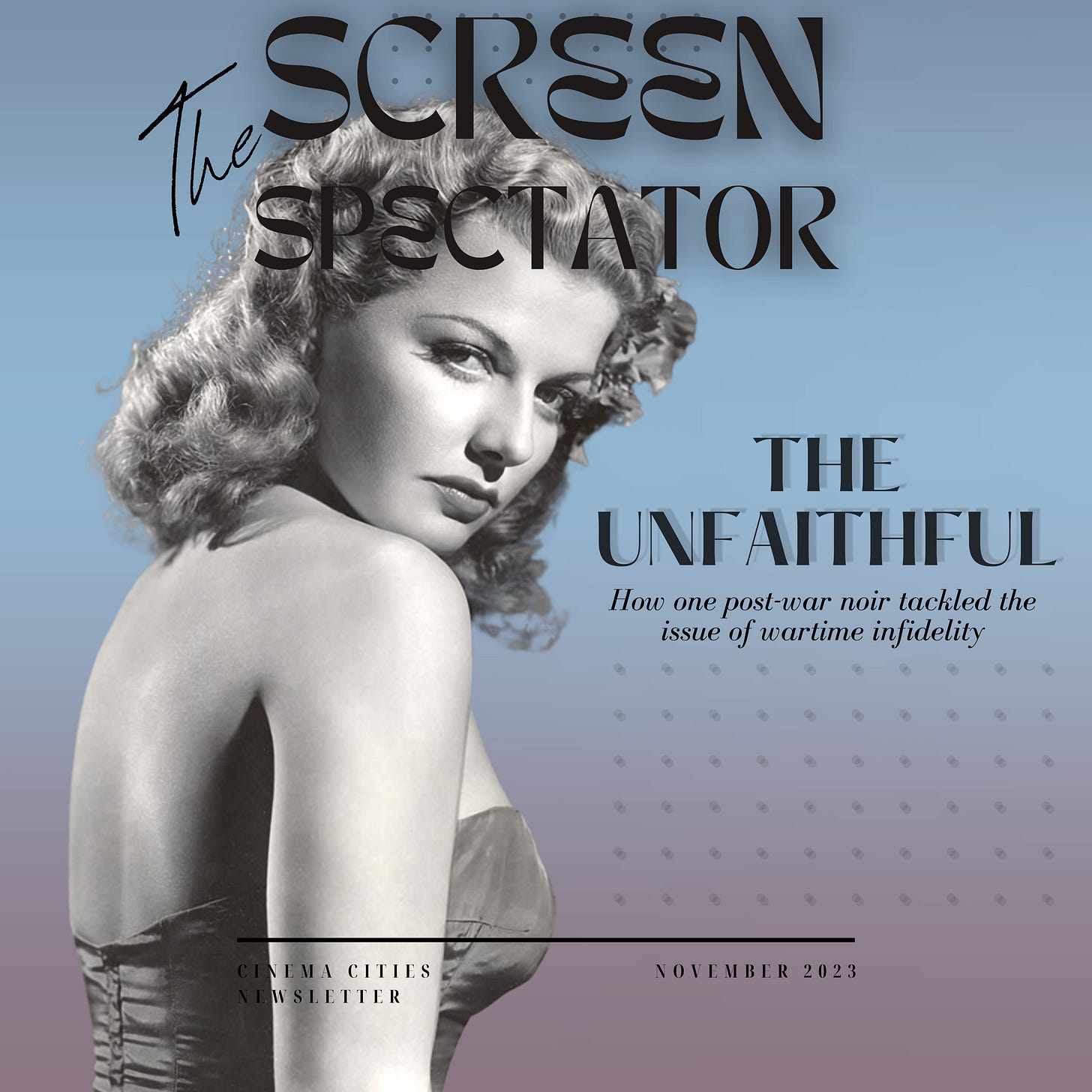
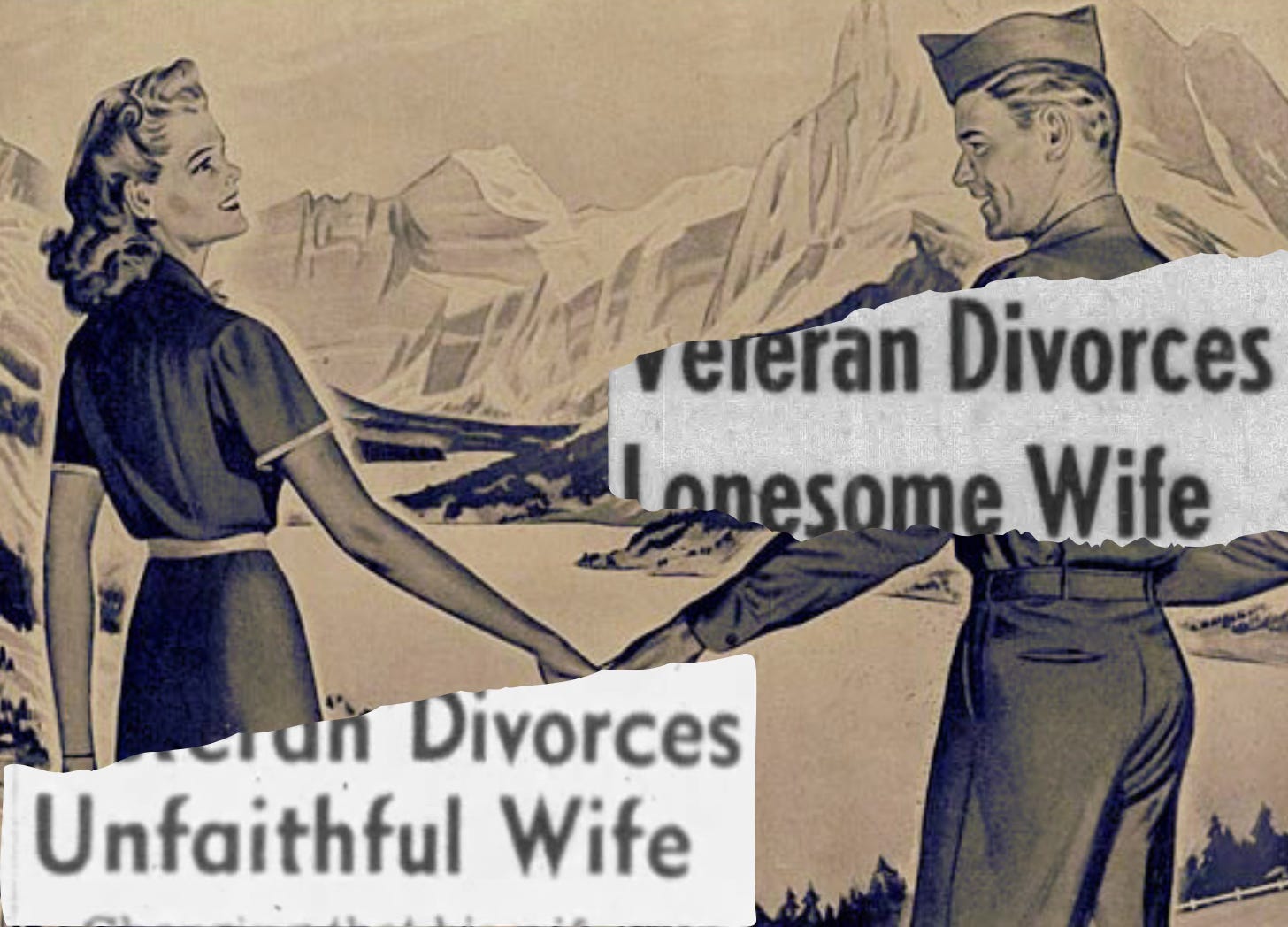


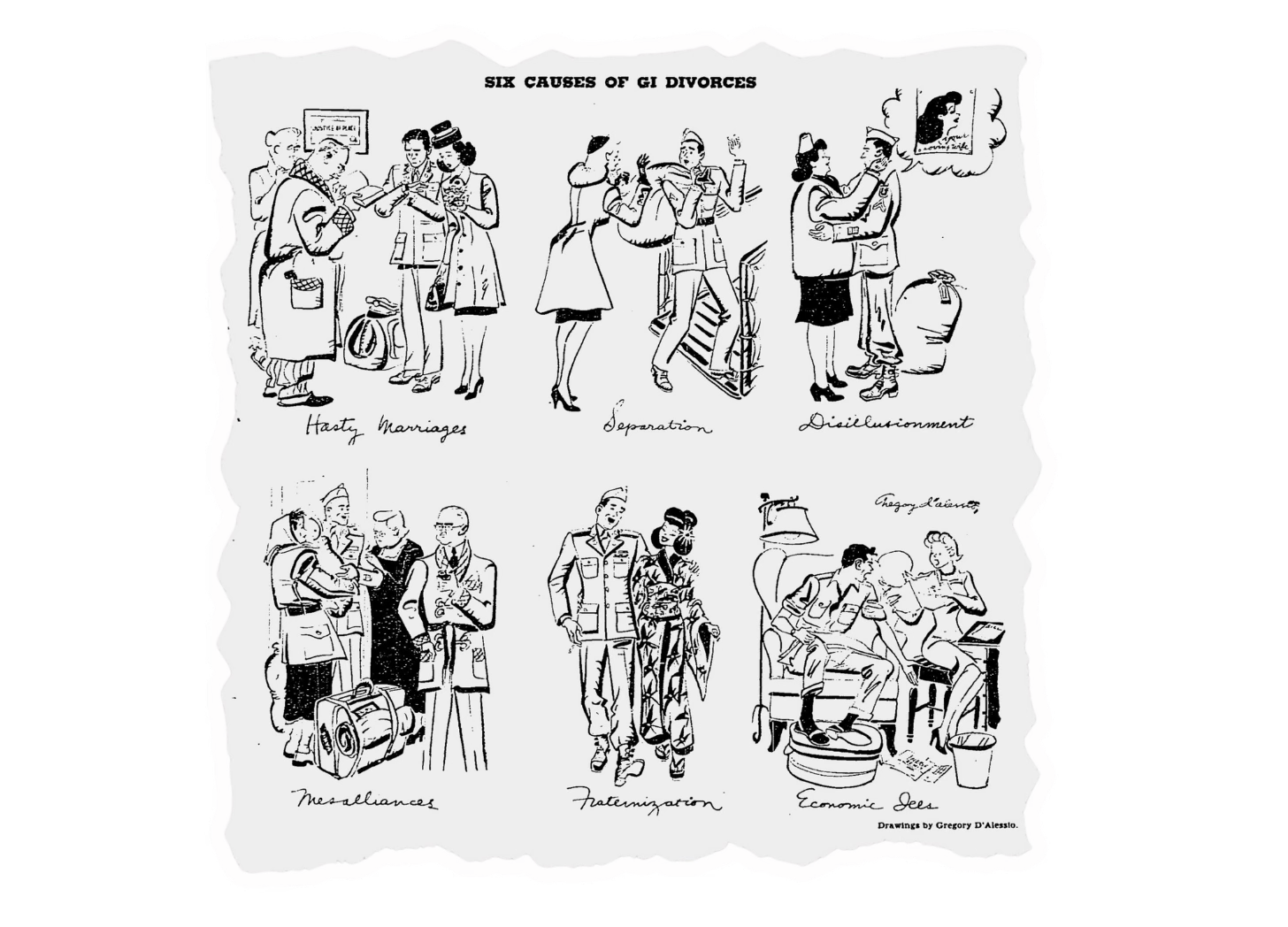
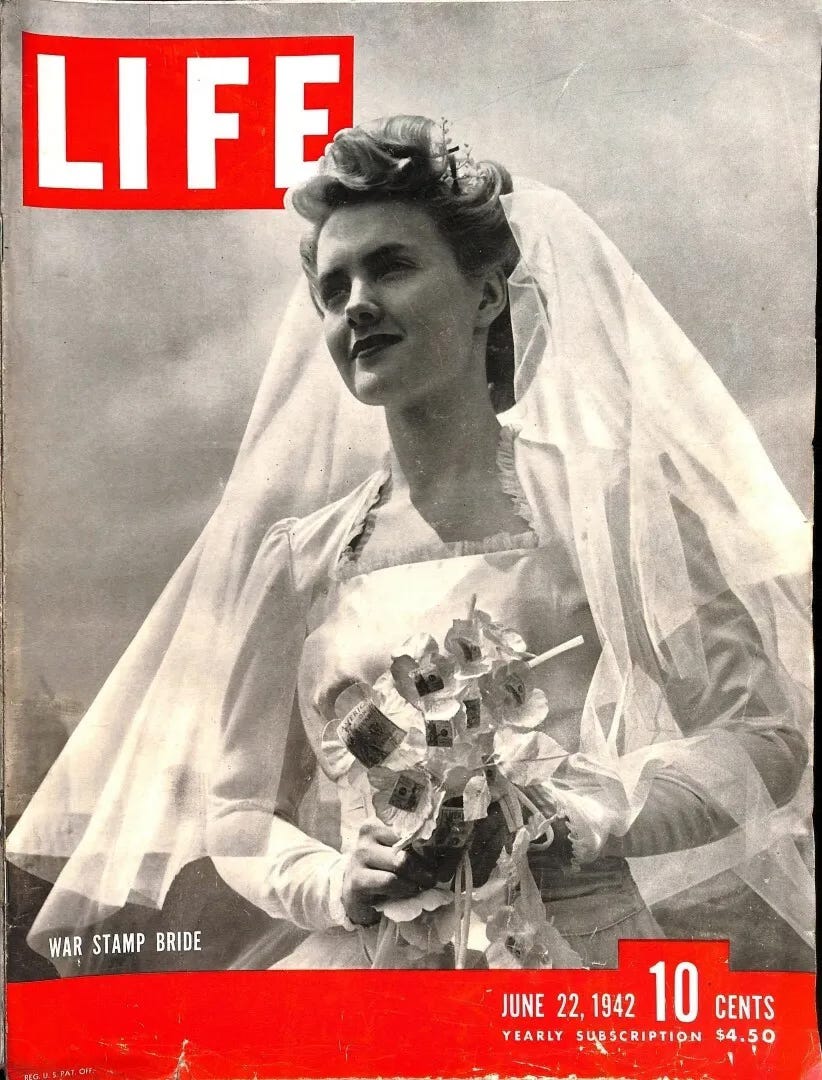

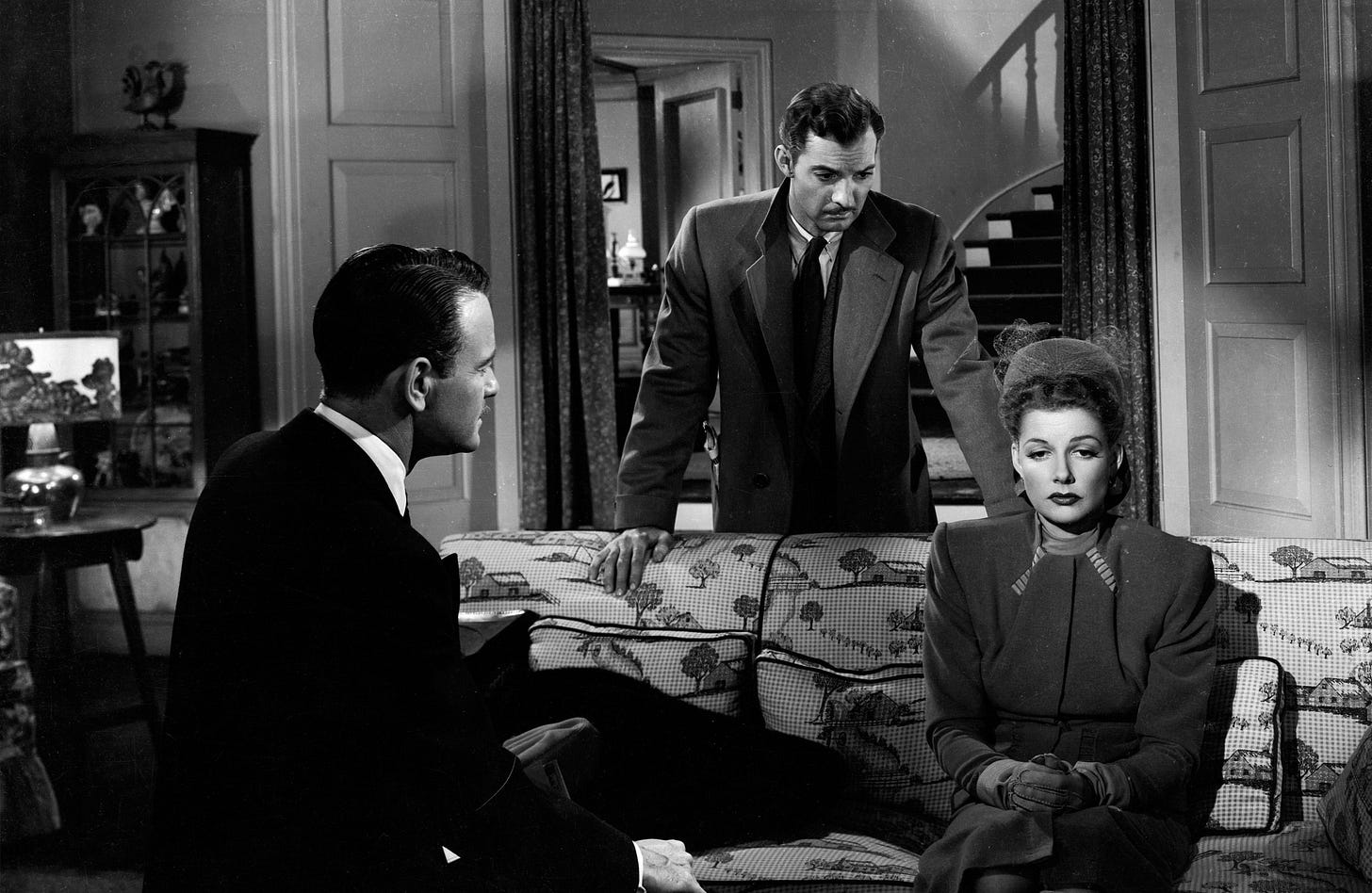
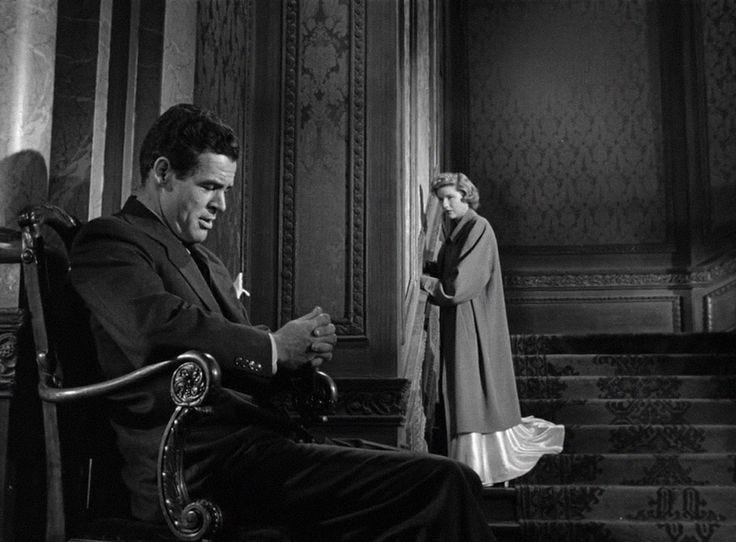
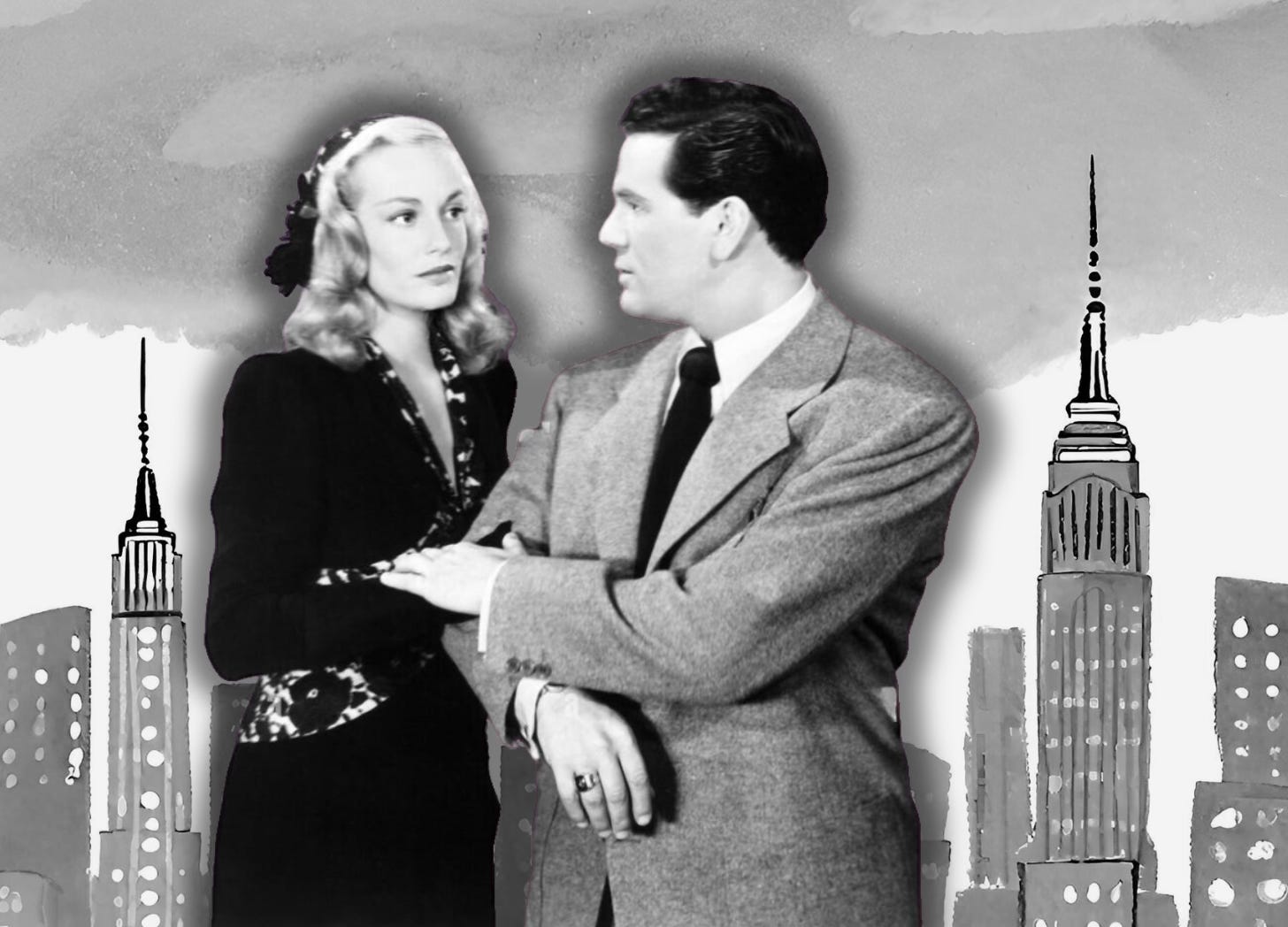







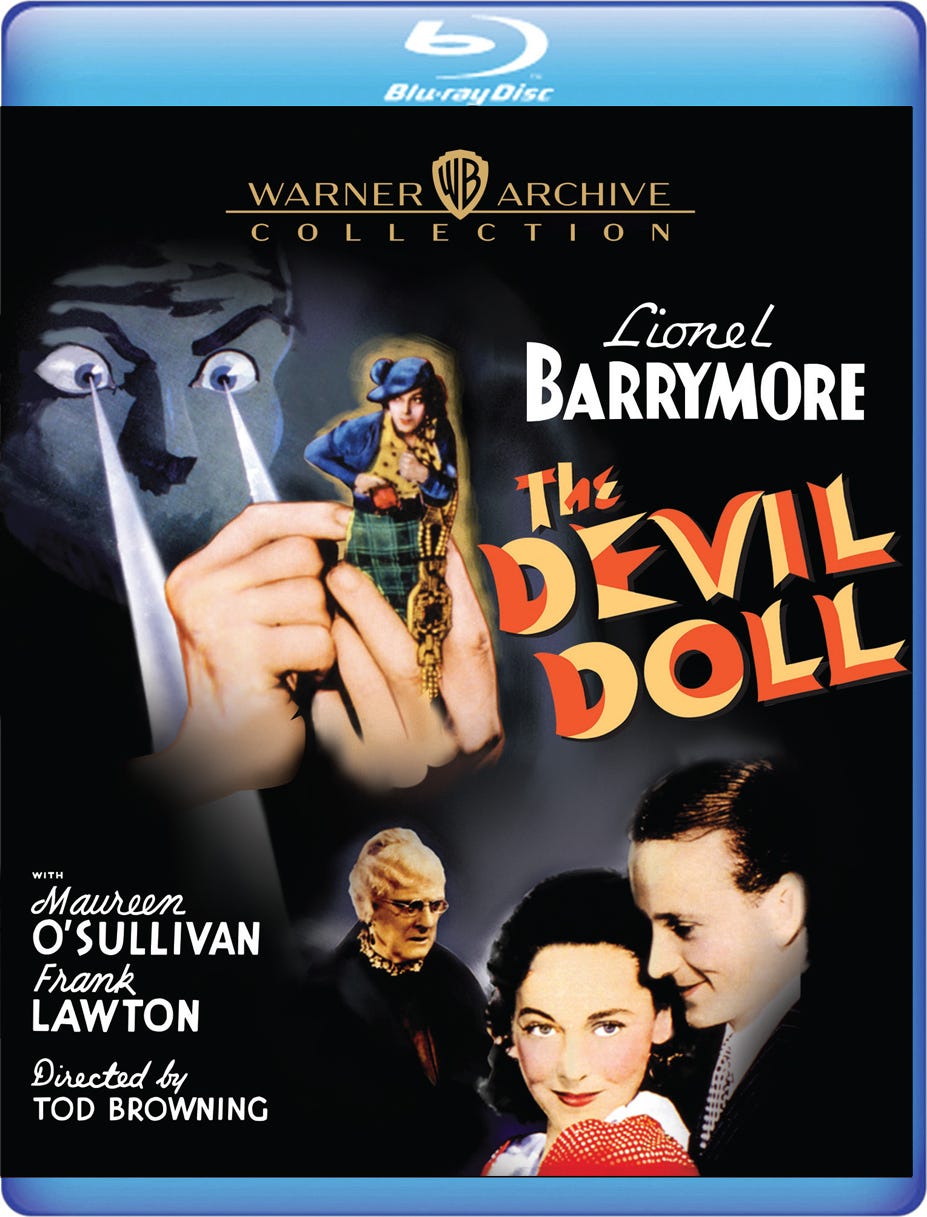

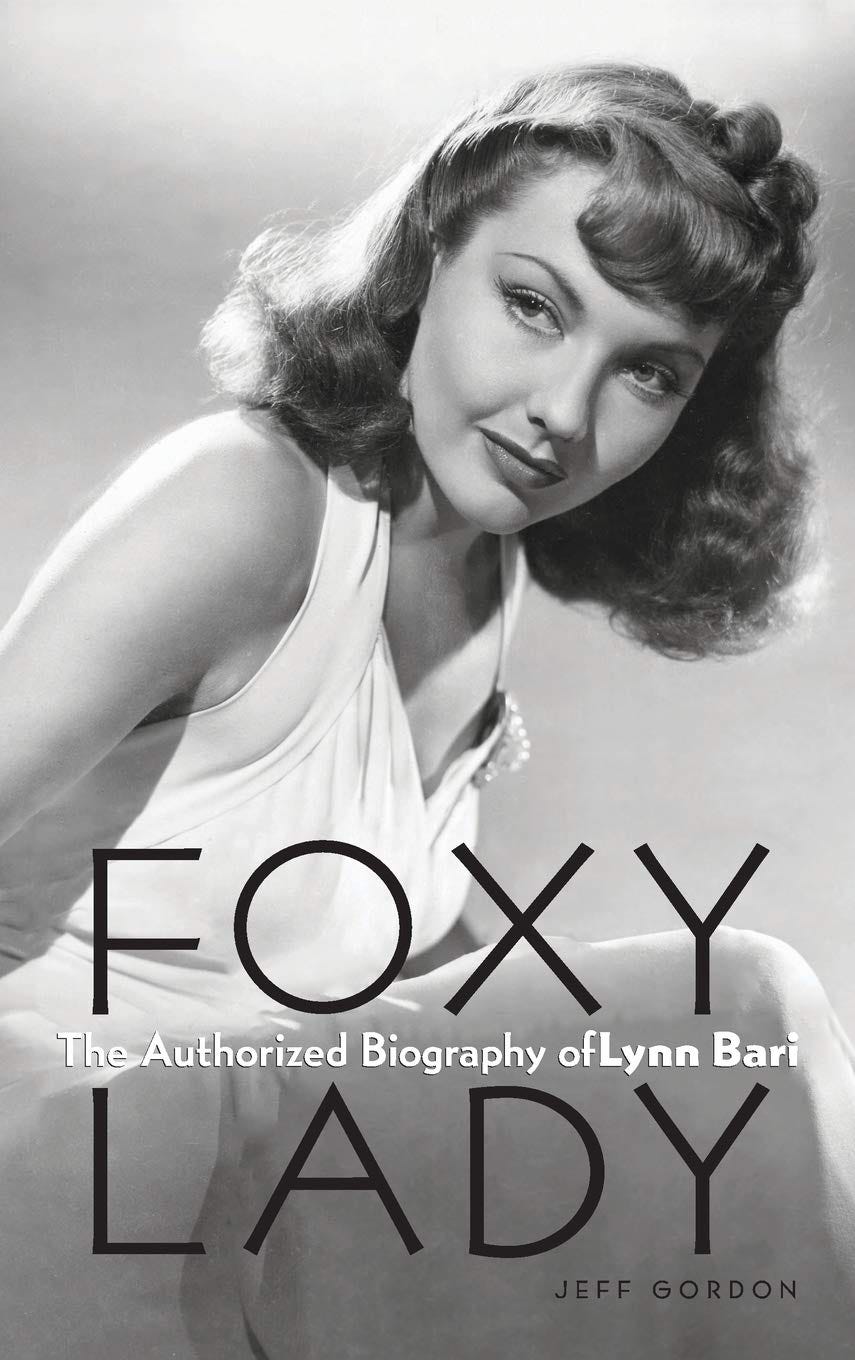

This essay is amazing in it's research and observations! Many of the reasons for the post-war domestic issues, have been discussed/debated ever since.
Many today don't realize the reason many had quick marriages before the man shipped off, was that you didn't have sex WITHOUT marriage and if you had spent time together, you BETTER not come home without a ring on your finger. So if you wanted "Something to remember", pay up with that ring.
The news articles of domestic problems worse than sub duty in the Pacific(!) are daunting in themselves.
An idea Peter Gunn has started streaming on Amazon Prime. It is the closest to a film Noir series that TV had.
So many femme fatales
how about a video essay.
Adam Wetstein